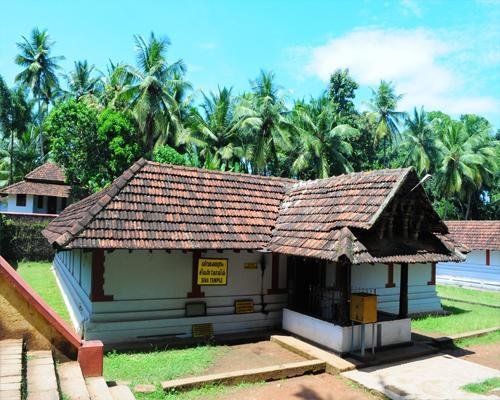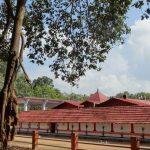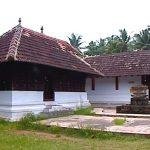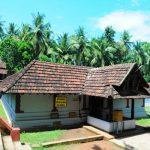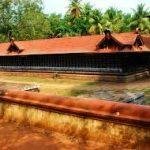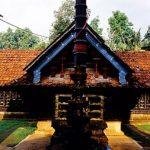Lokanarkavu Temple, Kozhikode, kerala
| Date built: | Records indicate the temple to be 1500 years old |
|---|---|
| Deity: | – |
| Architectural style: | Traditional Kerala style |
| Major festivals | Vrischikam Utsavam, Meenam Utsavam, Navaratri |
| Locale: | Vatakara |
| District:: | Kozhikode |
| Address: | Kavil Rd, Villiappally, Kerala 673104 |
| Phone | 04962527444 |
Lokanarkavu Temple is an ancient Hindu temple situated in Memunda 4 km from Vatakara, in Kozhikode District, North Malabarregion of Kerala state of south India. Lokanarkavu is a short form of Lokamalayarkavu which means lokam (world) made of mala(mountain), aaru (river) and kavu (grove). It is the official family temple of the 500 Aryan Nagariks who had migrated to Kerala and their successors. The closest railway station is at Vatakara, which is 5 km from temple. Te nearest airport is Kannur airport which is 54 km away.
Pooram is the important festival here and it is conducted with great pomp and show. The week-long festival begins with Kodiyettam (flag hoisting) and concludes with Arattu. The temple dedicated to goddess Durga has great historical importance as Thacholi Othenan, the legendary martial hero of Kerala, used to worship here every day.
Architecture
Lokanarkavu Temple is in Memunda 4 km from Vatakara, in Kozhikode (Calicut) District, North Malabar region of Kerala state of south India. Lokanarkavu is a short form of Lokamalayarkavu which means lokam (world) made of mala (mountain), aaru (river) and kavu (grove). It is the official family temple of the 500 Aryan Nagariks[citation needed] who had migrated to Kerala and their successors. The closest railway station is at Vadakara,which is 5 km from temple. Te nearest airport is Calicut airport which is 87 km away.
Pooram is the important festival here and it is conducted with great pomp and show. The week-long festival begins with Kodiyettam (flag hoisting) and concludes with Arattu. The temple dedicated to goddess Durga has great historical importance as Thacholi Othenan, the legendary martial hero of Kerala, used to worship here every day.
Lokanarkavu and Kalarippayattu Thirty days Mandala Utsavam in Malayalam month Vrischikam (November-December) and pooram in Malayalam month meenam (March-April) are the annual festival at the Lokanarkavu Bhagavathy Temple. This is the only temple where a peculiar folk dance called Poorakkali is presented during festivals. The dance, resembles the martial art Kalarippayattu. Even today, all Kalaripayattu artists seek the blessings of the deity before their debut due to the association of Lokanarkavu Temple with legendary hero thacholi othenan.
Lokanarkavu Temple Festivals Two annual festivals are celebrated here during the Malayalam months of Vrischikam (November – December) and Meenam (March – April).
Lokanarkavu Utsavam This main festival of the temple, which lasts for 41 days, is held during the Malayalam month of Vrischikam (mid November to mid December). It is locally known as Mandalavilakku Festival or Mandala Utsavam. The unique feature of the festival is that it is only here a folk dance called Thacholikali is performed during the temple festival. Thacholikali is similar to the traditional martial art form called Kalarippayattu.
Large numbers of people from various places flock here to see this festival. Another attraction is that all the lamps on the walls of the Lokanarkavu Bhaghawathi Temple are lit on the occasion.
Legend / Local stories
This temple of godess Durga stands 4kilometers from vatakara,near calicut a noted town in kerala,india.The temple is a complex of three temples of godess Durga,Shiva and VIshnu. The temple is frequently referred in the ballads of north kerala as the legendery hero Thacholi Othenan was a devotee of this godess.
The Durga temple was built by Aryans Vaishya Brahmins who migrated to this place some 1500 years back. They were Brahmins who took up trade as their main occupation. The Aryan successors of these temple still are of prime importance in the temple. They gradually began to accept some of the traditions of local Nairs and made martial relationship with them. But on close examination their customs and beliefs are evidently different from local Nair community. It is believed that the godess travelled with them to Lokanarkavu in the form of a lady who followed the five hundred Aryans. The successors still see this godess as their mother and not as godess. Often the name of Thacholi Othenan is misquoted with the origin of temple. Othenan was a great devotee,but never had any holding rights or anything to do with the establishment of Durga temple. It is evident from the fact that the godess is Durga at Lokanarkavu and not the Kali form. The heroes of Vadakkan Pattukal had their ancestral godesses as Kali form and not Durga form. The same applies to the local rulers who later claimed Lokanarkavu as their family godess.
All the rulers of Kerala had Godesses with Thamasa pooja or shakteya pooja; ie poojas in which either man or animal was sacrificed. It was a more local tradition and most family temples of Kerala kings and locals had followed such tradition untill it was modified. Later due to Aryanisation of temples, modifications were made by replacing human sacrifice with cutting plantain or performing poojas with tender coconut and cereals meant to replace liquor and meat. Unlike this local tradition Lokanarkavu durga temple do not have any such traditions and never had such practises as it was established by Aryans itself. It is said that most other godess temples in kerala are in Madhyama and rarely in Uthama state.
But this temple is said to be in Athyuthama state. The Aryans though manifested as locals they strongly upheld their ehical roots through a complex of differences from rest of the people. The race spirit was so high at older times that it is said that they refused to pay taxes to the local kings of kerala,as none of them was an Aryan. But at the same time or say at a later period they began to ignore the cast restrictions and even seemed to threaten the cast equations. But slowly they became adjusted and more reclusive and settles around the temple areas and withdrew from all other matters of Local people. Among the mandala vilakku festival, the successors of these Aryan Vaishya Brahmins migrants conduct the 16th vilakku, thats on 16th day and is of prime importance. As we enter the temple we must pray to the stage kept in memory of these Aryan Brahmin Ancestors who built the temple. The stage is at right side to the main entrance and all devottees must seek their permission and pray to them to see the godess inside. This is to show that the Lokanarkavu Durga holds these people to the highest esteem and she had followed them whereever they went and their happiness is her prime importance. It is said that the prayers done without praying to these ancestors goes much unheard. In short it is a place of a never experienced tradition in Kerala.Thirty days Mandala Utsavam in Malayalam month Vrischikam (November–December) and pooram in Malayalam month meenam (March–April) are the annual festival at the Lokanarkavu Bhagavathy Temple. This is the only temple where a peculiar folk dance called Poorakkali is presented during festivals. The dance, resembles the martial art Kalarippayattu. Even today, all Kalaripayattu artists seek the blessings of the deity before their debut due to the association of Lokanarkavu Temple with legendary hero thacholi othenan.
Photo Gallery
How to Reach:
Contact Details
Official Address

